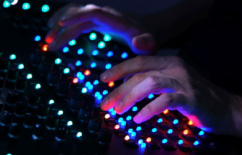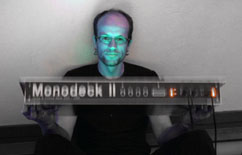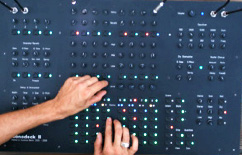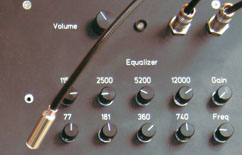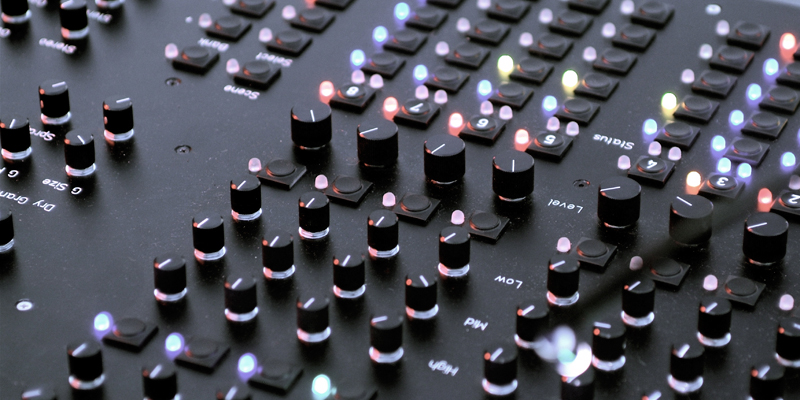
Monodeck I
In 2003 I decided to build my first own MIDI controller, the Monodeck. A MIDI controller is a hardware unit made for controlling a computer in a musical way, turning a general problem solving machine into a true musical instrument. For my live performances I needed a very specific device. No commercial product matched, so I finally built my own one, a box with knobs, LEDs and buttons, with a layout optimised for my performance. It worked much better for me than expected, my concerts became more spontaneous and I becam e quite skilled playing it.Monodeck II
However, the first Monodeck still only served as an additional interface and could not replace operating the computer with the mouse and staring at the screen during my concerts. After three years of heavy touring the unit started to fall apart and it was time for a new version, larger, more precise, with more possibilites, build as an industrial grade prototype, black aluminium, white engraved text, no plastic, made to survive rough touring a bit longer:Monodeck I was more or less a combination of the internal parts of a Doepfer Drehbank controller plus some more Doepfer boards for a small number of buttons and LEDs plus a MIDI / USB interface.
For Monodeck II we wanted a more customised and flexible solution and we decided to use the MIDIBOX hardware modules developped by Thorsten Klose, [www.ucapps.de]. Inside Monodeck II two chained core PIC modules, and several AIN, DIN, and DOUT boards are controlling LEDs, buttons and knobs. For addressing Monodeck II`s 110 RGB LEDs Ralf Suckow designed a special hardware / firmware modification for the DOUT / core modules. Now LEDs can not only turned on/off to produce seven colors but also dimmed by software. A special hardware extension also allows adjustment of the color range of all LEDs at the same time. The firmware on the two Core modules only provides the basic functionallity to allow scanning of knobs / buttons and control the LEDs via MIDI notes / MIDI CCs and some test routines.
The more interesting work is done within a MAX patch acting as the bridge between the Monodeck II and Ableton Live. This patch allows assignment of a variety of different functions to the buttons and to use the LEDs for feedback. This makes the Monodeck II a very open and expandable system, since it provides not only knobs but also a 8 x 8 LED button matrix. A MIDI step sequencer, pads to launch sounds, remote control of FX etc. is all possible with this structure.
Ralf Suckow: support, electronics, PIC firmware, ideas, dedication, component hunting
Jan Buchholz: Python script & Live API
Schaeffer AG: front panel manufacturing
Thorsten Klose: MIDIBOX modules
Robert Henke: idea, concept, electronics, mechanical engineering, design, wiring miles of cable, MAX patching, gin & tonic.
Monodeck II is not for sale
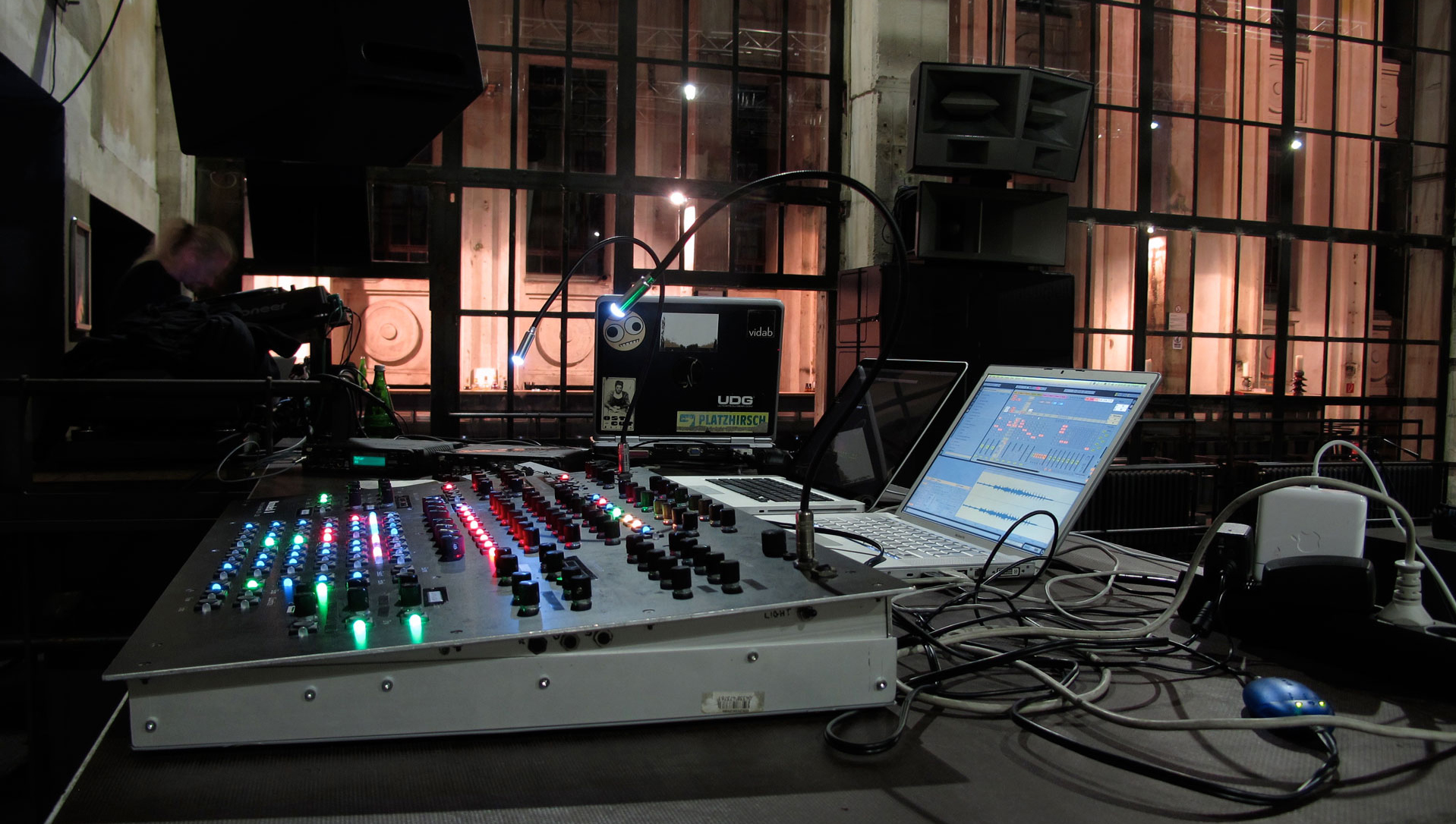
Monodeck II in use for Monolake Live Surround set at Berghain, Berlin, 2010.
